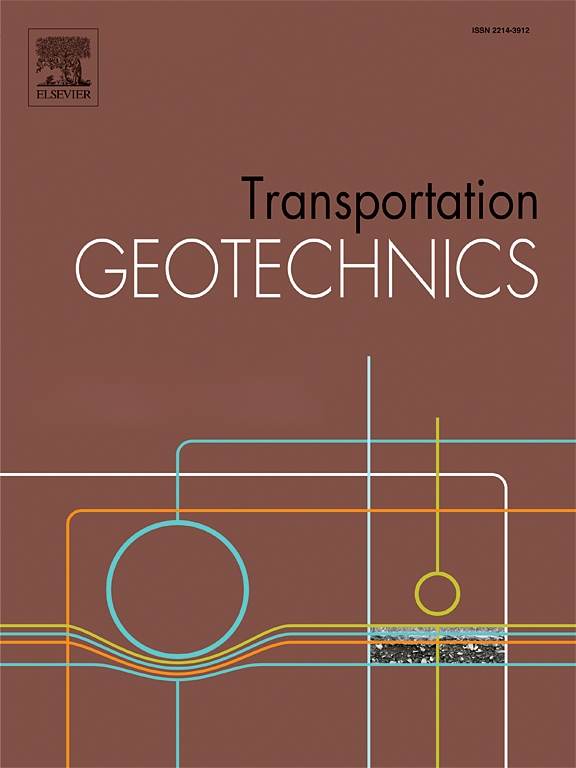An analytical solution for evaluating the progressive bending failure of columns in soft ground under embankment loading
IF 5.5
2区 工程技术
Q1 ENGINEERING, CIVIL
引用次数: 0
Abstract
Rigid columns are commonly employed in soft clay embankment construction due to their high shear and bending capacities. However, conventional design methods often oversimplify the interaction between the columns and the surrounding soil by assuming uniform shear failure across all columns. This simplification can result in overestimations of embankment stability and may fail to account for potential unforeseen failures. In response to this limitation, the present study introduces a novel analytical framework, validated through centrifuge testing, to systematically assess the stability of soft ground reinforced with columns. Unlike conventional approaches, the methodology accounts for both bending failure mechanisms and progressive failure behavior during rapid embankment construction. It explicitly incorporates column-soil interaction, providing a more realistic stability assessment. Analytical expressions derived in the study quantify lateral forces exerted on the columns, offering insight into failure propagation from the embankment toe to the center. By integrating critical factors such as geometric parameters and soil properties, the methodology captures the variations in maximum bending moments, thus enhancing the predictive accuracy. This analysis of column progressive behavior enhances the understanding of embankment stability and provides a solid foundation for geotechnical design decisions.
路堤荷载作用下软土地基柱连续弯曲破坏的解析解
刚性柱由于具有较高的抗剪和抗弯能力,在软土路堤施工中普遍采用。然而,传统的设计方法往往过于简化柱与周围土体之间的相互作用,假设所有柱都有均匀的剪切破坏。这种简化可能会导致对路堤稳定性的高估,并可能无法解释潜在的不可预见的破坏。针对这一限制,本研究引入了一种新的分析框架,通过离心机测试验证,以系统地评估用柱加固的软土地基的稳定性。与传统方法不同,该方法考虑了快速路堤施工过程中的弯曲破坏机制和渐进破坏行为。它明确地纳入柱-土相互作用,提供了更现实的稳定性评估。研究中导出的解析表达式量化了施加在柱上的侧向力,从而深入了解了从路堤趾到中心的破坏传播。通过整合几何参数和土壤性质等关键因素,该方法可以捕获最大弯矩的变化,从而提高预测精度。柱进行为的分析提高了对路堤稳定性的认识,为岩土工程设计决策提供了坚实的基础。
本文章由计算机程序翻译,如有差异,请以英文原文为准。
求助全文
约1分钟内获得全文
求助全文
来源期刊

Transportation Geotechnics
Social Sciences-Transportation
CiteScore
8.10
自引率
11.30%
发文量
194
审稿时长
51 days
期刊介绍:
Transportation Geotechnics is a journal dedicated to publishing high-quality, theoretical, and applied papers that cover all facets of geotechnics for transportation infrastructure such as roads, highways, railways, underground railways, airfields, and waterways. The journal places a special emphasis on case studies that present original work relevant to the sustainable construction of transportation infrastructure. The scope of topics it addresses includes the geotechnical properties of geomaterials for sustainable and rational design and construction, the behavior of compacted and stabilized geomaterials, the use of geosynthetics and reinforcement in constructed layers and interlayers, ground improvement and slope stability for transportation infrastructures, compaction technology and management, maintenance technology, the impact of climate, embankments for highways and high-speed trains, transition zones, dredging, underwater geotechnics for infrastructure purposes, and the modeling of multi-layered structures and supporting ground under dynamic and repeated loads.
 求助内容:
求助内容: 应助结果提醒方式:
应助结果提醒方式:


